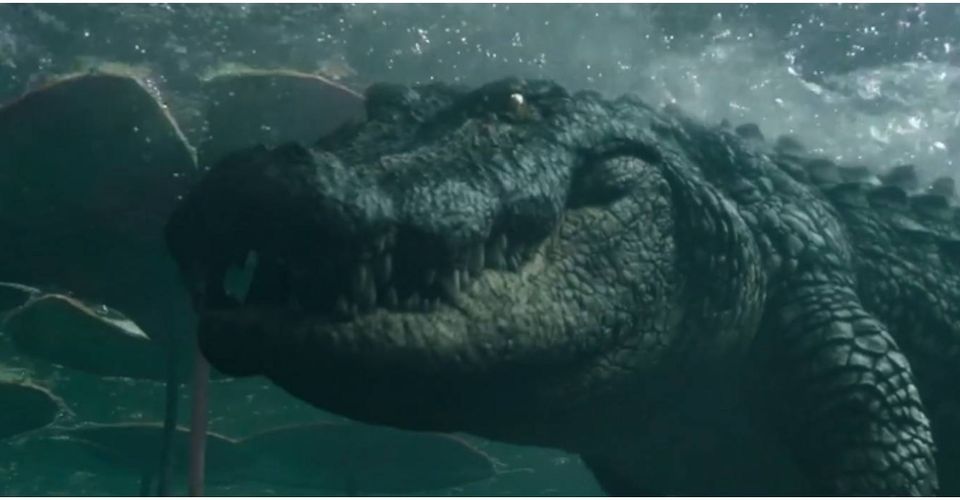Crawl: How CGI Made The Alligators So Realistic

Alexandre Aja’s alligators amok thriller, Crawl, released in 2019 to positive reviews and a robust box office. Unlike similar direct to video films featuring CGI creatures, Aja’s production took the time to ensure that the hungry gators were scary and realistic in his movie.
The past couple decades have been difficult for post-Jaws creature features. Once CGI became an inexpensive tool, low budget studios started cranking out increasingly ambitious–but poorly constructed–films. While Jurassic Park may have ushered in an era of life-like computer animation, its expensive and time-consuming effects were the exception, and relegated to big budget studio films. In the low budget world of direct-to-video and made-for-cable, the landscape was not as impressive. For every The Meg, there are at least 20 movies like Piranhaconda, micro-budget, B-horror movies that boast computer rendered creatures with all the realism of Scooby Doo.
With streaming content becoming the preferred method of enjoying genre films, horror fans have become accustomed to viewing poorly rendered CGI product. Low budget studios such as Asylum, responsible for the cult franchise Sharknado, release multiple horror and science fiction titles a year. The sheer amount of content has shaped the way audiences perceive this kind of entertainment. Most modern creature features available for streaming are confined to guilty pleasure or “hate-watching” status, as their effects are so distractingly bad. Understanding that realism is not a strength, many of these studios have abandoned any pretense of seriousness. Sharks, piranhas, and any real-life predators are generally cast aside for fantastical beasts that are as ridiculous as the collection of pixels that render them.
CGI Made Creature Features Scary Again

When it was first reported that Aja, director of such respected horror movies as High Tension and the remake of Wes Craven’s The Hills Have Eyes, was filming a killer alligator movie, fans assumed it would be a campy ride. The director’s Piranha 3-D from 2010 was a fun reboot of the 1978 film, a gory comic book with intentionally goofy computer generated piranhas. That film was able to balance both comedic and horror elements into a crowd-pleasing 90 minutes. However, Aja’s talent as a director and his sizable budget were the only things separating his film from the typical Asylum offering. When the first trailer was released for Crawl, audiences were surprised to find that it was not only intended as a genuine thriller offering, but one with photorealistic beasts.
After Crawl was released in the summer of 2019, it was warmly embraced by horror and mainstream audiences alike. Its smart script and thoughtful execution was enhanced by computer generated alligators which became credible through a variety of tech tricks. Aja has stated in interviews that he knew that he didn’t want animatronics, as alligators move in ways that would be impossible for practical effects to emulate. He has stated that a lot of work went into ensuring the alligators appeared real. This included a lot of practical work on the set, giving the gators weight by showing their physical impact and destruction in tangible ways.
Aja stated that by mixing the technology, he could create realistic computer effects. Scenes where the alligators interacted with the environment were enhanced by his team using practical methods to inhabit the space. Actual weight and gravity were the simple tools used on the set, and when combined with realistic CGI, the effects are rather impressive. Crawl grossed over $90 million worldwide, offering hope for more quality computer-driven horror movies in the future.

















